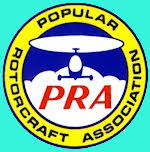FAA Rules – Sport Pilot in regard to Personal Rotorcraft
I do not have a pilots certificate, become a Gyroplane Sport Pilot
I do not have a pilots certificate, become a Gyroplane Private Pilot
I hold an FAA pilots certificate, add Gyroplane Category/Class Sport Pilot
I am A CFI and I want to Learn about Sport Pilot
What is a Light Sport Aircraft
PRIVILEGES AND LIMITATIONS OF SPORT PILOTS
The Sport Pilot program provides a faster, less expensive way for aspiring pilots to earn their wings. But the reduced training time required for sport pilots does necessitate certain restrictions that don’t apply to holders of more advanced pilot certificates.
Aircraft that Sport Pilots may Operate
A Sport Pilot may operate as Pilot in Command (PIC) of an aircraft that qualifies as a Light Sport Aircraft (LSA) and which is in the same category and class as an aircraft in which the pilot has been trained and endorsed.
Sport Pilots can also fly conventionally registered (Standard Airworthiness Certificate) aircraft, amateur-built aircraft, or experimental aircraft whose weight, complexity, seating, and performance meet LSA requirements.
Operating Privileges of Sport Pilots
A Sport Pilot may act as Pilot in Command of an eligible LSA:
-
- During daylight hours under Visual Flight Rules (VFR) conditions and with visual reference to the ground
- Solo or while carrying a single passenger, who may share up to one-half of the operating expenses (fuel, landing fees, aircraft rental, etc.) for that particular trip.
- At altitudes up to 10,000 feet above mean sea level (MSL)
- Cross-country, anywhere in the United States
- In Class E and G Airspace (and in Class B, C, and D airspace, with appropriate training and a logbook endorsement)
Limitations of Sport Pilots
A Sport Pilot may not operate as Pilot in Command of an aircraft:
-
- When weather conditions are less than VFR minimums or when they don’t have visual reference to the ground
- At night
- In Class A airspace
- For compensation or hire
- In furtherance of a business
- When demonstrating an aircraft to a potential buyer or lessee
- As a member of a volunteer airlift
- As a required crew member of an aircraft requiring more than one pilot
- Outside of the United States, unless authorized by the foreign aviation authority
In addition to the above, Sport Pilots who wish to fly an aircraft that is not in the same category and class as an aircraft for which they have been trained and endorsed must first obtain training and a logbook endorsement for the additional category and class of aircraft as appropriate.
Light-Sport Aircraft
The FAA defines a Light Sport Aircraft (LSA) as an aircraft, other than a helicopter or powered-lift that, since its original certification, has continued to meet the following:
Maximum gross takeoff weight—1,320 lbs, or 1,430 lbs for seaplanes.
Lighter-than-air maximum gross weight—660 lbs (300 kg.)
Maximum stall speed—51 mph (45 knots)
Maximum speed in level flight with maximum continuous power (Vh)—138 mph (120 knots)
Single or two-seat aircraft only
Single, reciprocating engine (if powered), including rotary or diesel engines
Fixed or ground-adjustable propeller
Unpressurized cabin
Fixed landing gear, except for an aircraft intended for operation on water or a glider
Can be manufactured and sold ready-to-fly under a new Special Light-Sport aircraft certification category. Aircraft must meet industry consensus standards. Aircraft under this certification may be used for sport and recreation, flight training, and aircraft rental.
Can be licensed Experimental Light-Sport Aircraft (E-LSA) if kit- or plans-built. Aircraft under this certification may be used only for sport and recreation and flight instruction for the owner of the aircraft.
Can be licensed Experimental Light-Sport Aircraft (E-LSA) if the aircraft has previously been operated as an ultralight but does not meet the FAR Part 103 definition of an ultralight vehicle. These aircraft must be transitioned to E-LSA category no later than January 31, 2008.
Will have FAA registration—N-number.
Aircraft category and class includes: Airplane (Land/Sea), Gyroplane, Airship, Balloon, Weight-Shift-Control (“Trike” Land/Sea), and Powered Parachute.
U.S. or foreign manufacture of light-sport aircraft is authorized.
Aircraft with a standard airworthiness certificate that meet above specifications may be flown by sport pilots. However, the aircraft must remain in standard category and cannot be changed to light-sport aircraft category. Holders of a sport pilot certificate may fly an aircraft with a standard airworthiness certificate if it meets the definition of a light-sport aircraft.
May be operated at night if the aircraft is equipped per FAR 91.205, if such operations are allowed by the aircraft’s operating limitations and the pilot holds at least a Private Pilot certificate and a minimum of a third-class medical.
